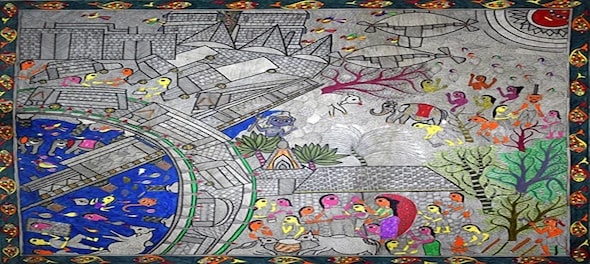
Owning a work of art with unmatchable aesthetic value, that appreciates with time, is indeed a valued and treasured asset. And with the art market presenting an encouraging prospect, this is the ideal entry point to invest in Indian art. Its stint with undervaluation is a matter of the past and the process to garner its due share of appreciation has commenced. Good art will always inspire demand and the prices for masterpieces by seminal artists will remain steady as they have the leverage of a rich provenance. However, a very important parameter that must be taken into account while acquiring a piece is the emotive experience one shares with the artwork. It is therefore important to study the artist’s practice and build a symbiotic relationship with the creations.
Indian art has proven to be a safe asset with long-term goals and has even done well during inflationary periods. However, having said that, art will always be a subjective investment, influenced by the trends of the time. Therefore, one must always keep one's ears to the ground and validate an acquisition, backed by research and analysis. Factors such as an artwork’s exhibition and publication history go a long way to prove the work’s importance, it not only validates its authenticity but also places the work on a pedestal of sorts.
In a nutshell, when one particular work is shortlisted to be published or exhibited, it invariably implies that the work is a true representative of the artist’s vision; after all, out of the thousands of works executed the selected few do get prominence. Another crucial factor to trace is the provenance of the artwork. It is also imperative to follow the respective artist’s auction performance before committing to a transaction or a bid.
After researching and achieving clarity about the contended acquisition the final step is to choose a genuine and well-informed source. Galleries and auction houses represent the primary and secondary market-place respectively. An auction house acquisition proves to be exciting as well as completely transparent, and the presented artwork’s legitimacy is seconded by the auction house since they undertake research and adhere to due diligence protocols. Internet technology and digital data have also played a huge role with regards to publishing data about the art market. The online module for auctions and data dissemination helps to ensure that geographic barriers are overcome and patrons of Indian art from all over the globe can gain accessibility without any hindrance.
Apart from the safety factor which technology provides, there is the advantage of ease and mobility. Users can participate in auctions while they are on the go, either through a website or a mobile phone app. All the essential data pertaining to the lots are published online and is shared on the open platform for all to glean through. Finally, the duration of the auction gets extended, while conventional auction format is conducted over a crunched time span, the online format is not constrained with this concern and can take place over a period of a couple of days.
Given the current exposure that Indian art is receiving, the projected turnover of the market will hold its ground, and further expand over the next decade. It is safe to expect an increment in prices, given the steady growth in demand and the limited supply of auction quality artworks. Domestic collectors have a discerning appetite for good quality works, based on the data of the paintings sold of the highest value by all the leading auction houses we can infer that the demand in the sub-continent is steadily increasing. Demand has also sustained its levels in the international circuit, reflecting a resilient demand amongst international and NRI collectors.
The Indian art auction market has even stood its ground through the course of 2020. One could consider last year’s world record established for the most expensive modern Indian art painting as a validating point. VS Gaitonde continues to rule the roster, considering that it was his untitled work from 1995 that previously held the record, while in 2020 his painting from the year 1974 superseded his 2015 auction record.
With a fresh Indian precedent, which includes international recall and the much-deserved recognition for Indian artists, the art market in India is elevated and yet grounded with precise and calculated sanguine projections. Reflecting upon these statistics the Indian art environment is scaling steadily, hereby garnering attention on a juggernaut scale. Analysing and thereafter including Indian art properties, during the asset planning & strategy phase should not be undermined. Therefore, rather than focusing on short-term gains, it is imperative to perceive art as a long-term moveable asset.
—The author, Siddanth Shetty is VP, Business Strategy & Operations, AstaGuru. The views expressed are personal
(Edited by : Ajay Vaishnav)
Check out our in-depth Market Coverage, Business News & get real-time Stock Market Updates on CNBC-TV18. Also, Watch our channels CNBC-TV18, CNBC Awaaz and CNBC Bajar Live on-the-go!


Supreme Court says it may consider interim bail for Arvind Kejriwal due to ongoing Lok Sabha polls
May 3, 2024 4:57 PM
10% discount on fare on Mumbai Metro lines 2 and 7A on May 20
May 3, 2024 2:40 PM

